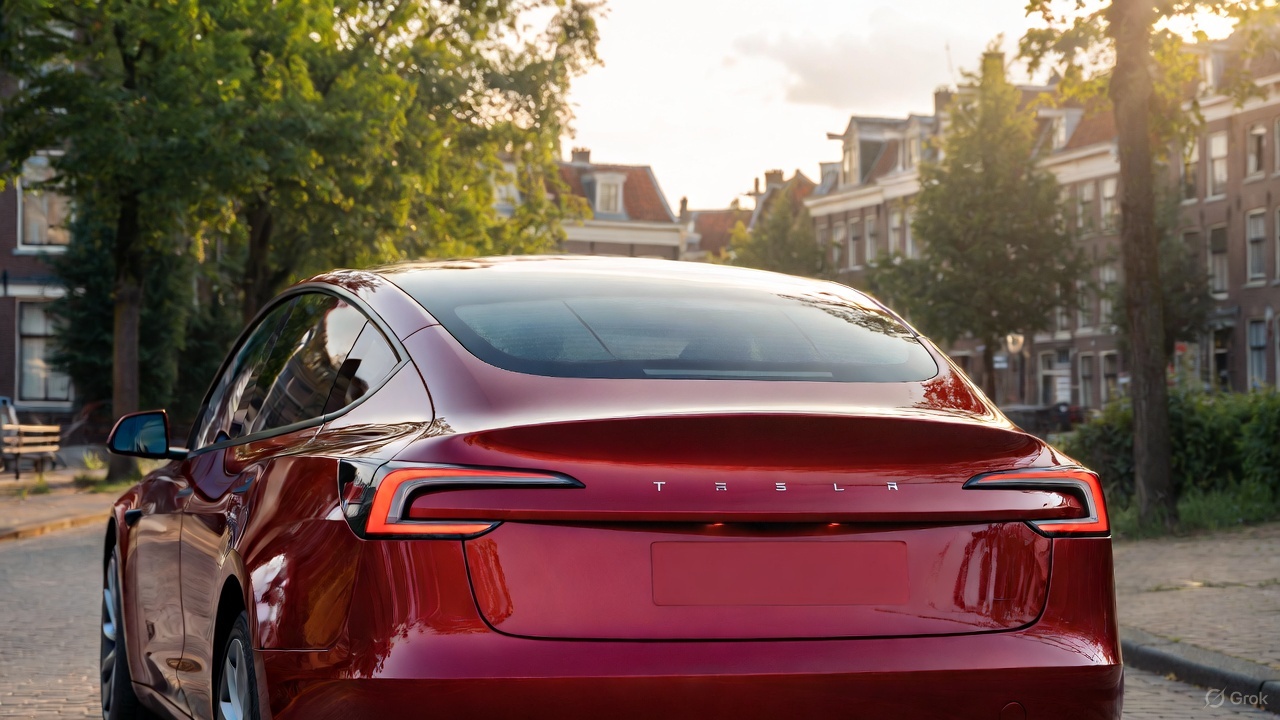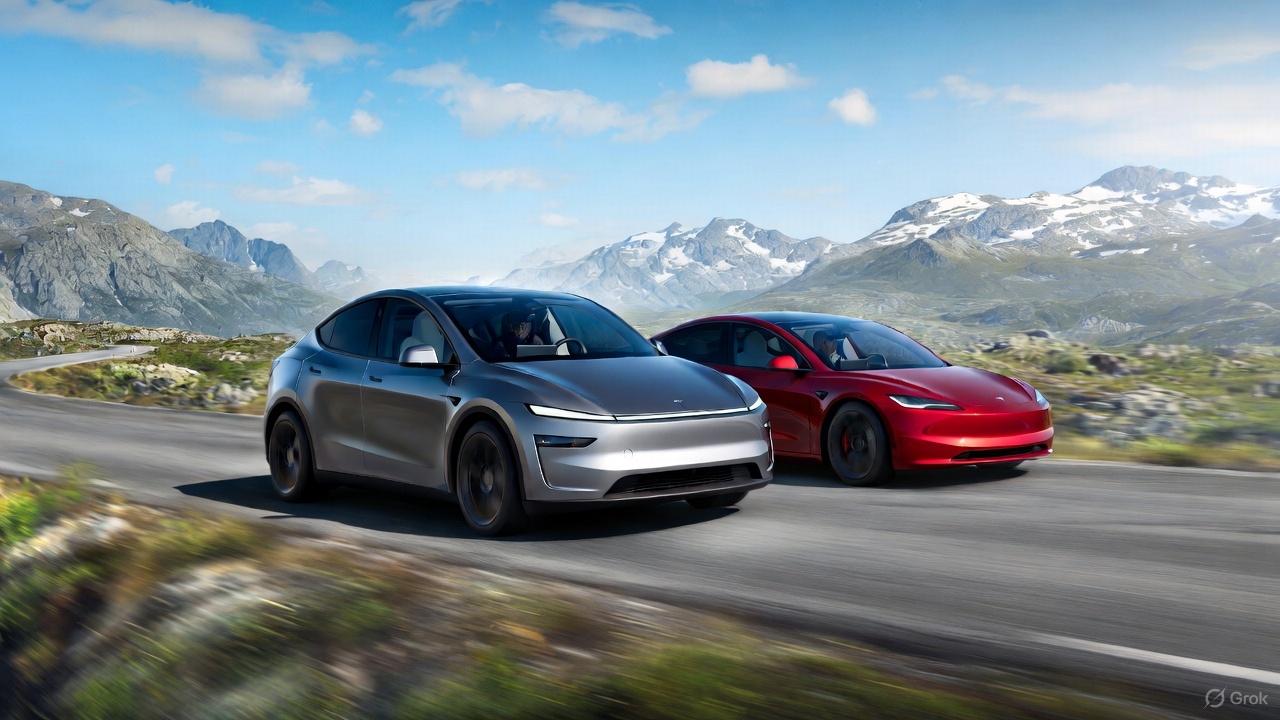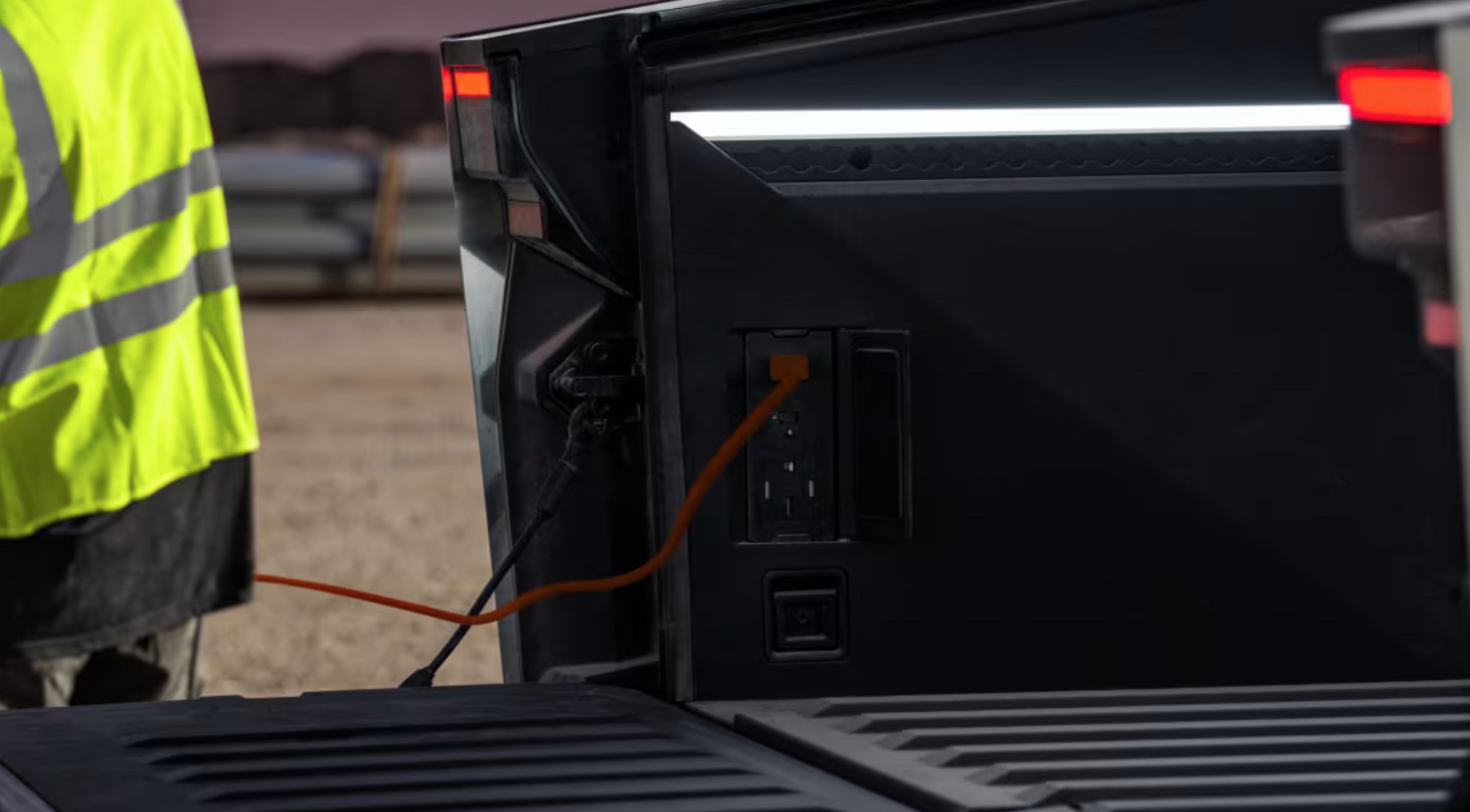Tesla’s lead engineer for the Cybertruck explained the reason behind an interesting quirk, after owners noticed that they weren’t able to use the bed power outlets during certain charging sessions.
On Sunday, Tesla Cybertruck Lead Engineer Wes Morrill responded to users on X asking why the vehicle’s truckbed outlets and onboard power couldn’t be used during charging. Morrill and some users clarified that this was only the case when not Supercharging, such as when plugged in at a campsite, to which the engineer explained that it has to do with the architecture for the AC/DC converter.
During AC charging, the Cybertruck’s AC/DC converter, which converts grid AC to DC to charge the battery, is the same equipment used for onboard power. Morrill also said that it could be possible to use the converter for the onboard power and charging simultaneously, though he says it would take some development. He explains further below, as shared on X:
The AC/DC converter used to take grid AC and convert it to DC to charge the HV battery is the same hardware used to generate the AC grid you use for your on board power. There are several powerstages in the AC/DC converter, so it may be possible to use one to charge at a limited…
— Wes (@wmorrill3) August 25, 2024
Tesla further details the problem with the Cybertruck’s bed power outlets while AC charging in passing in the Cybertruck owner’s manual, as can be seen below.
AC outlets may be disabled in the following scenarios:
- Very low ambient temperatures.
- When an AC charging cable is connected to Cybertruck even if the vehicle is not actively charging.
- The high voltage Battery does not have enough charge.
- GFCI or overcurrent detection has been tripped.
The engineer’s explanation also comes as Elon Musk has encouraged Tesla executives and workers to use the X platform to respond directly to customer questions over the past few years.
Morrill, for one, regularly responds to user inquiries on X, including last week when he helped get the Cybertruck’s Emergency Response Guide posted on the Tesla website after another person requested the manual. A few days after the initial request, Morrill posted the link to the first responder’s page, which now includes the Cybertruck Rescue Sheet detailing how to disable the high-voltage battery, along with other important safety instructions for emergency response teams.
Tesla Cybertruck gets Vision Park Assist with update 2024.26.11
What are your thoughts? Let me know at zach@teslarati.com, find me on X at @zacharyvisconti, or send your tips to us at tips@teslarati.com.

News
Tesla FSD approved for testing in Nacka, Sweden, though municipality note reveals aggravating detail
Nacka, Sweden, a municipality just a few miles from Stockholm, has given its approval for FSD tests.

Tesla has secured approval for FSD testing in an urban environment in Sweden. As per recent reports from the Tesla community, Nacka, Sweden, a municipality just a few miles from Stockholm, has given its approval for FSD tests.
A look at the municipality’s note regarding FSD’s approval, however, reveals something quite aggravating.
FSD testing approval secured
As per Tesla watcher and longtime shareholder Alexander Kristensen, Nacka is governed by the Moderate Party. The shareholder also shared the municipality’s protocol notes regarding approval for FSD’s tests.
“It is good that Nacka can be a place for test-driving self-driving cars. This is future technology that can both facilitate mobility and make transportation cheaper and more environmentally friendly,” the note read.
The update was received positively by the Tesla community on social media, as it suggests that the electric vehicle maker is making some legitimate headway in releasing FSD into the region. Sweden has been particularly challenging as well, so securing approval in Nacka is a notable milestone for the company’s efforts.
Aggravating details
A look at the notes from Nacka shows that FSD’s proposed tests still met some opposition from some officials. But while some critics might typically point to safety issues as their reasons for rejecting FSD, those who opposed the system in Nacka openly cited Tesla’s conflict with trade union IF Metall in their arguments. Fortunately, Nacka officials ultimately decided in Tesla’s favor as the company’s issues with the country’s unions are a completely different matter.
“The left-wing opposition (S, Nackalistan, MP and V) voted no to this, referring to the fact that the applicant company Tesla is involved in a labor market conflict and does not want to sign a collective agreement. We believe that this is not an acceptable reason for the municipality to use its authority to interfere in a labor law conflict.
“Signing a collective agreement is not an obligation, and the company has not committed any crime. The municipality should contribute to technological development and progress, not work against the future,” the note read.
News
Tesla Model 3 and Model Y named top car buys in Norway
Despite growing competition from European and Korean brands, both models stood out for their balance of price, performance, and everyday usability.

Norway’s annual roundup of the best car purchases featured Tesla’s two main sellers this year, with the Model 3 and Model Y securing top positions in their respective segments.
Despite growing competition from European and Korean brands, both models stood out for their balance of price, performance, and everyday usability. The verdict comes as electric vehicle adoption remained above 95% of new vehicle sales in the country.
Tesla Model 3 strengthens its value position
Among compact EVs, the Tesla Model 3 maintained its position as the best overall buy thanks to its strong blend of performance, efficiency, and updated features. Reviewers noted that every trim offered compelling value, especially with the all-electric sedan’s improved cabin ergonomics and the return of the turn-signal stalk, which was one of the few previous complaints among drivers.
The Model 3’s mix of long-range capability, low operating costs, and responsive handling has continued to set the benchmark for compact EVs in Norway. While competitors from Hyundai, Volkswagen, and Peugeot have narrowed the gap, Tesla’s price-to-capability ratio has remained difficult to beat in this segment, Motor.no reported.
“The Model 3 clearly offers the best value for money in the compact class, no matter which version you choose. Now it also gets the turn signal lever back. This eliminates one of the few flaws in a driving environment that many believe is the best on the market,” the publication wrote.
Tesla Model Y claims its crown
The Tesla Model Y emerged as Norway’s top family-car purchase this year. The latest refresh introduced improvements in ride quality, styling, and interior materials, allowing the Model Y to deliver a more premium driving experience without a substantial price increase.
Reviewers praised its spacious cabin, strong safety profile, and practical range, all of which reinforced its appeal for families needing an all-purpose electric crossover. The Model Y remains especially notable given its continued popularity in Norway even as Tesla faces declining sales in other global markets.
“The Model Y is back as the winner in the family class. The upgrade in the new year was even more extensive than expected. It is a slightly more elegant and significantly more comfortable Model Y that solidifies its position as Norway’s best car purchase in the most important class,” the Norwegian motoring publication noted.
News
Tesla Giga Berlin is still ramping production to meet Model Y demand: plant manager
Tesla Gigafactory Berlin has expanded to two full shifts, as per the facility’s plant manager, and a lot of it is due to Model Y demand.

Tesla Gigafactory Berlin has expanded to two full shifts, as per the facility’s plant manager, and a lot of it is due to Model Y demand. While registrations in some countries such as Sweden have fallen sharply this year, the company’s sales in other key territories have been rising.
Giga Berlin shifts to two shifts
Giga Berlin factory manager André Thierig told the DPA that the facility has been running two shifts since September to manage a surge in global orders. And due to the tariff dispute with the United States, vehicles that are produced at Giga Berlin are now being exported to Canada.
“We deliver to well over 30 markets and definitely see a positive trend there,” Thierig said.
Despite Giga Berlin now having two shifts, the facility’s production still needs to ramp up more. This is partly due to the addition of the Tesla Model Y Performance and Standard, which are also being produced in the Grunheide-based factory. Interestingly enough, Giga Berlin still only produces the Model Y, unlike other factories like Gigafactory Texas, the Fremont Factory, and Gigafactory Shanghai, which produce more than one type of vehicle.
Norway’s momentum
Norway, facing an imminent tax increase on cars, has seen a historic spike in Tesla purchases as buyers rush to secure deliveries before the change takes effect, as noted in a CarUp report. As per recent reports, Tesla has broken Norway’s all-time annual sales record this month, beating Volkswagen’s record that has stood since 2016.
What is rather remarkable is the fact that Tesla was able to achieve so much in Norway with one hand practically tied behind its back. This is because the company’s biggest sales draw, FSD, remains unavailable in the country. Fortunately, Tesla is currently hard at work attempting to get FSD approved for Europe, a notable milestone that should spur even more vehicle sales in the region.











